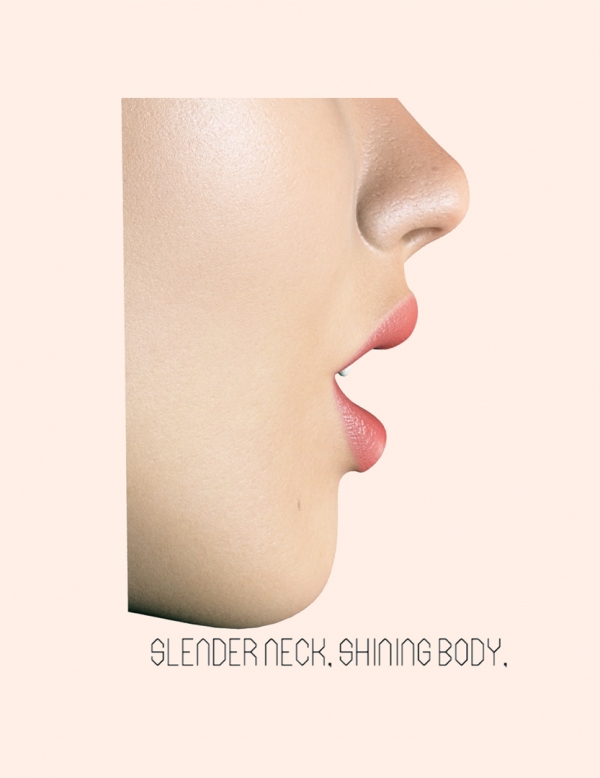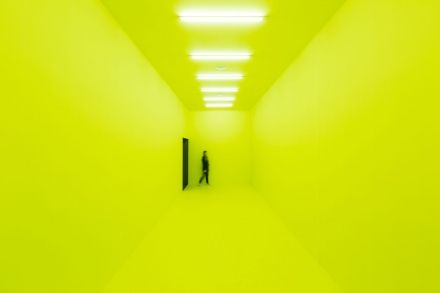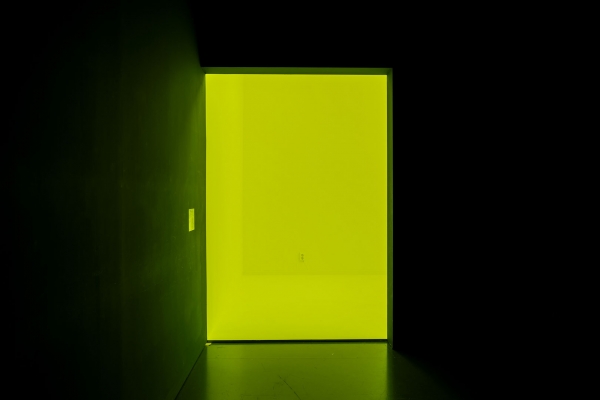Marguerite Humeau
Cleopatra ? A Cappella, 2015, HD synthetic voice singing a love song in 9 extinct languages, 7 min. 48 sec., loop, Courtesy of the artist and Pierre Lanchantin (Machine Intelligence Laboratory, University of Cambridge)?
Black Mamba, 2015, 2 grams of Black Mamba venom sourced in Florida, pigment, paint, Dimensions variable, Courtesy of the artist
, 1000Calling herself the “Indiana Jones of the Google era,” the artist has presented diverse installation works reflecting her interest in topics such as supernatural events, prehistoric life forms, and communications technology. She makes stories of her own through fictional recreations, though those stories are based on scientific knowledge gained by consultations with paleontologists, zoologists, linguists, and psychics. For Mediacity Seoul 2016, a cube painted in fluorescent yellow containing a small amount of poison from the Black Mamba (a poisonous African snake) is presented as a work of art. The artist focuses on the completely opposite aspects; for instance though generally considered something fatal and dangerous, in India the poison is a beneficial medicine that can even be used to treat cancer. Thus, the venom of the Black Mamba is a fatal poison as well as a useful antidote; similarly, this work attracts visitors with its intense and beautiful color, while at the same time causing them to recoil with the information of the poison. In this way, the artist erases the boundary between life and death and fiction and reality.
This room is full of the sounds of love songs sung repeatedly by Cleopatra in the nine extinct languages that the pharaoh used to speak: Ge’ez, Median, Ancient Greek, Arabic, Egyptian, Aramaic, Ancient Hebrew, Troglodyte, and Persian. The artist was inspired by the idea that there are many written historical records of Cleopatra’s astonishing beauty but they are fewer records what she sounded like. Marguerite Humeau travelled around the world to find the last translators of each of the nine languages. She then worked with speech synthesis laboratories at the University of Cambridge to recreate her synthetic voice. The work resuscitates Cleopatra as a twenty-first century diva and creates her first recital where she sings in the language of her age. With this work, the artist provides us with a new experience of being on the border between life and death, and fiction and reality.
Marguerite Humeau
b. 1986. Lives and works in London.
Marguerite Humeau’s work stages the crossing of great distances in time and space, transitions between animal and mineral, and encounters between personal desires and natural forces. The work explores the possibility of communication between worlds and the means by which knowledge is generated in the absence of evidence or through the impossibility of reaching the object of investigation. Marguerite Humeau weaves factual events into speculative narratives, therefore enabling unknown, invisible, or extinct forms of life to erupt in grandiose splendour. Combining prehistory, occult biology and science fiction in a disconcerting spectacle?the works resuscitate the past, conflate subterranean and subcutaneous, all the while updating the quest genre for the information age. Marguerite Humeau studied at the Royal College of Art, London, where she obtained her MA in Design 142 Interactions in 2011. Her work has been shown in various solo and group exhibitions in museums including Palais de Tokyo, Paris; Manifesta11, Z?rich; TBA21 Thyssen-Bornemisza Art Contemporary, Vienna; the Serpentine Gallery, London; and the Museum of Modern Art, New York. Her work has been recognised internationally through various talks, awards and publications, such as Mousse, Blau, Metropolis M, The New York Times, Elephant Magazine, Kaleidoscope, Monopol, TAR magazine, I-D, Berlin Art Link, Artnet, Sleek Magazine, NPR, France Culture, Lib?ration, and Le Monde.





